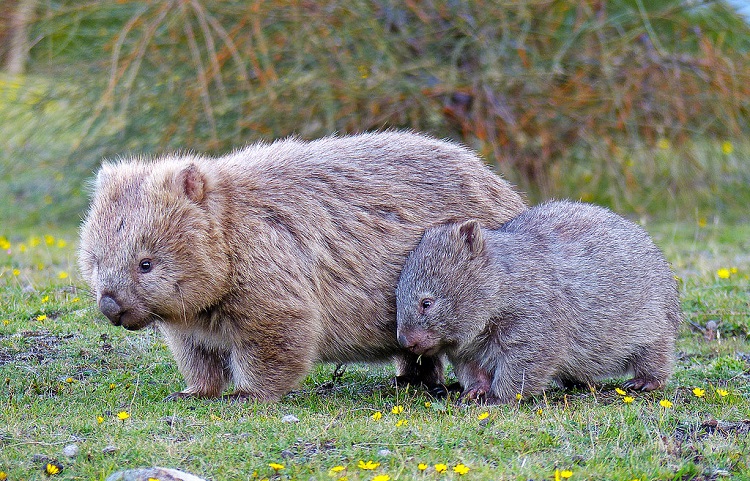The common wombat, also known as Vombatus ursinus or bare-nosed wombat, is an animal endemic to Southern Australia, but this comical-looking creature is bigger than you would imagine.
It is also part of the marsupial family with the likes of kangaroos and koalas. This means that they all rear their young in a pouch.
There are three species of wombat; two belong to the Hairy-nosed wombats, and one to the common or bare-nosed wombats.
So what other interesting facts will we discover about these tailless burrow diggers? Keep reading to find out.
What Is a Wombat? (Bare-Nosed Wombat)
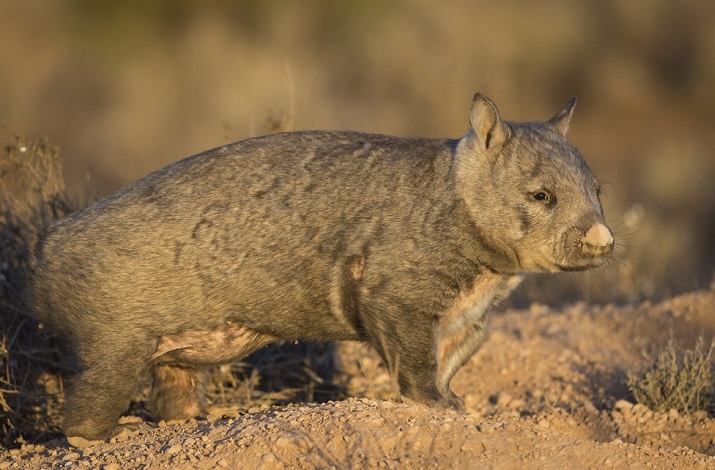
A wombat is a short and stocky four-legged marsupial native to Australia. They have basically no tail and are extremely adaptable, living in a range of habitats from forests to mountains of south Australia and Tasmania.
They also live in an isolated patch of the Epping forest national park.
Etymology of Wombats
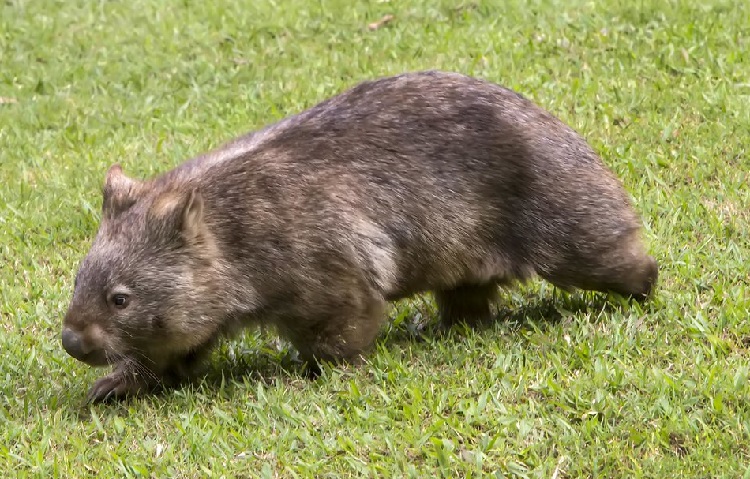
The word wombat comes from the aboriginal language Dharug, although this language is now almost completely extinct. The Dharug people originally lived in the area of Australia that is now known as Sydney.
The first recorded use of the word Wombat was in 1798 when two men, John Price, and James Wilson, living in aboriginal ways, visited New South Wales and came across the common wombat.
They described it as having the appearance of a badger, leading to areas like Badger Creek and Badger Corner being named after them.
Evolution and Taxonomy
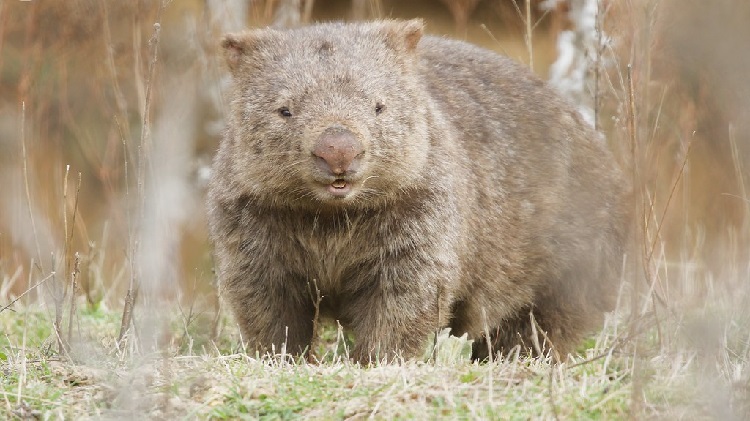
Even though wombats have been studied, their evolution is still very much a mystery. Scientists believe that the wombat evolved from other marsupials around 40 million years ago, while others believe it was only 25 million years ago – now that’s a big difference!
Scientific Classification
Due to the unclear evolution of these marsupials, they are classified into a separate family.
- Kingdom: Animalia
- Phylum: Chordata
- Class: Mammalia
- Infraclass: Marsupialia
- Order: Diprotodontia
- Family: Vombatidae
Genera and Species
There are three extant species of wombats living today, and one is already extinct.
Vombatus
- Vombatus ursinus or the Bare-nosed wombat.
- Vombatus hacketti, or the Hacketts wombat, which is now extinct.
Lasiorhinus
- Lasiorhinus latifrons, or the Southern Hairy-nosed wombat
- Lasiorhinus krefftii or the Northern Hairy-nosed wombat
Characteristics of Wombats
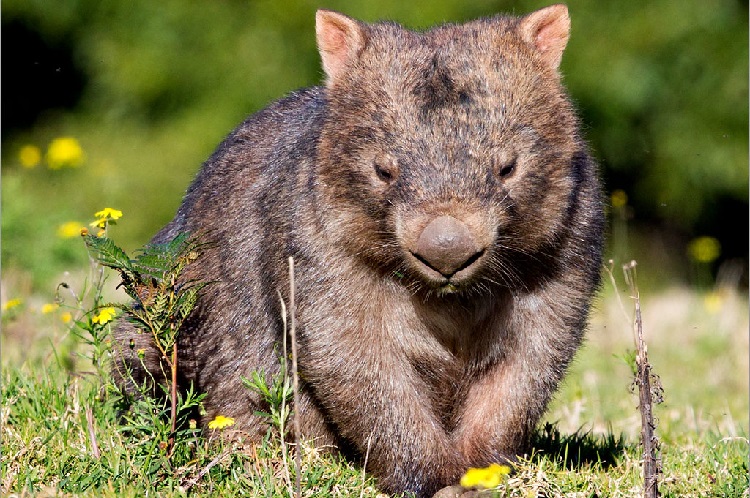
Here are some characteristics that will make you easily identify wombats.
What Does a Wombat Look Like?
The common wombat has coarse dark hair, a bare nose, small eyes, and round ears, while the Hairy-nosed wombat has silky fur and pointed ears, and as their name suggests, their nose is completely covered in hair. All wombats walk with a cute waddle.
Can you dig it? Yes, you can if you’re a wombat! They are master diggers, and their bodies are designed for exactly this job. Wide strong feet with huge claws make them the perfect burrow-digging machine, and they can move around 3 feet of dirt in a single night.
Wombat Size
Wombats are bigger than I think most people realize, as the average size is between 40-45 inches in length. However, an adult wombat can grow up to 3 feet long, the same size as a medium-sized dog.
Wombat Height and Weight
As you may have guessed, these adorable little creatures are not very tall, averaging around 24 to 28 inches at the shoulder. The common wombat is the larger of the three species weighing anything from 44-77 lbs, while its smaller cousin, the Hairy-nosed wombat, can reach weights between 42-71 pounds.
Ecology and Behavior
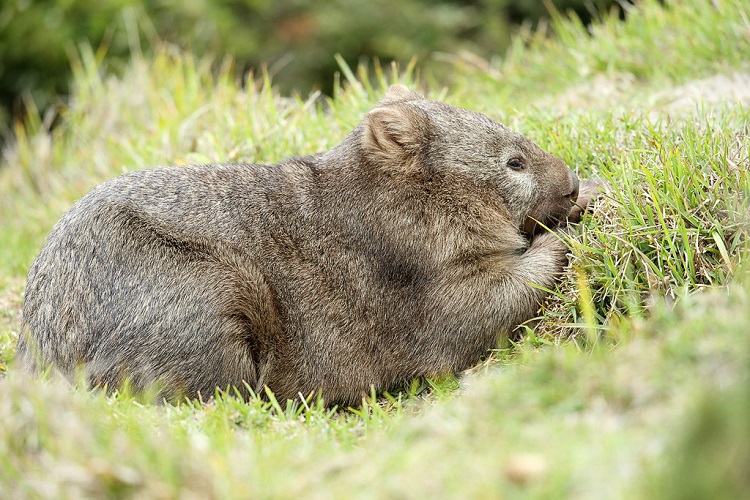
Now if you think you have a slow metabolism, then take a minute to consider the wombat’s, which takes a whopping 8-14 days to complete digestion. Although this sounds like a real design flaw, this extraordinarily slow metabolism helps them survive in the dry conditions in which they live.
Wombats are mostly quiet animals, but they make some interesting sounds when needed. The Bare-nosed wombat is slightly noisier than its hairy-nosed cousin.
Their sounds can range from hissing when they are annoyed or angry to their call sounds that can sound a little bit like a pig squealing. They also make grunting, clicking, and growling noises.
Habitat and Self-Defense–Where Do Wombats Live?
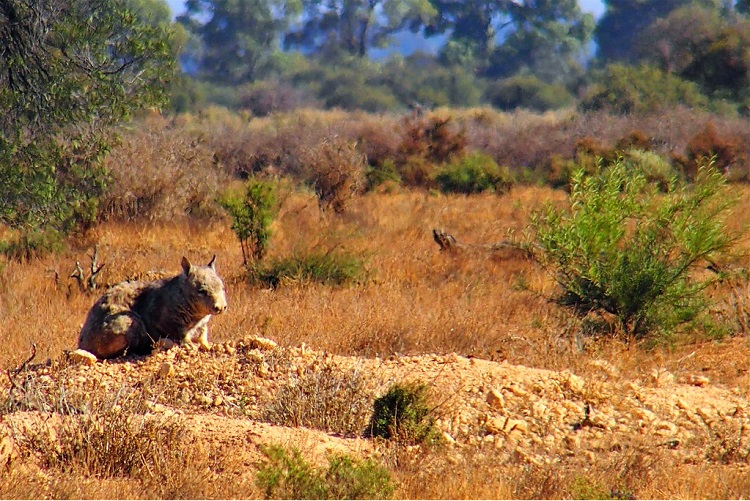
Wombats dig large burrows using their huge sharp claws, usually spending around four days sleeping in one burrow before moving on to the next one.
This is how they create the intricate tunnel and chamber systems they live in, quite similar to that of a rabbit warren. These huge burrows are often used by other animals for shelter.
Wombats are pretty adept at defending themselves and will defend their burrows when threatened. Their natural predators are dingos, wild dogs, and Tasmanian devils, but they have an unusual defense system – using their toughened rear hide or butt to you and me.
Now their butt is made up of mostly cartilage, meaning that it is really hard, and combined with having stubby tails, as well as plenty of fat and fur, means that if a predator is stupid enough to follow a wombat into its burrow, it is highly unlikely to cause them any harm.
Now for those predators that do make the mistake of following a wombat into its burrow, they will end up with either a hefty kick from those powerful legs, just like you would get from a donkey. Or they may end up with a crushed skull – either way; it is a win-win situation for the wombat!
Wombat Diet
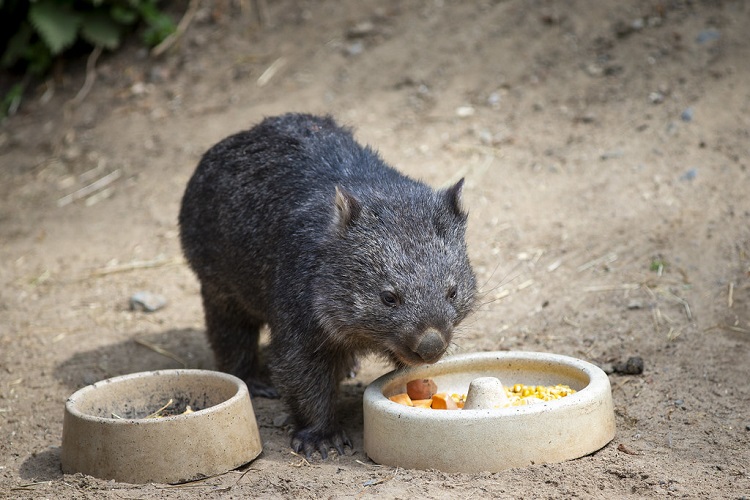
Wombats are herbivorous and love nothing more than chowing down on the grass, roots, trees, and even little fungi. They spend around 8 hours a night grazing and use their rodent-like teeth and strong jaws to tear up food.
They also have a special stomach gland that helps them digest their tough food and a long digestive tract that helps their body absorb the nutrients and water it needs.
Wombat Lifespan
Whether we are talking about Hairy-nosed wombats or Bare-nosed wombats, their lifespan is the same. In the wild, they usually live between five to fifteen years, while in captivity, they can live up to 20 years. This is mainly due to them having no predators in captivity.
Family Life of Wombats
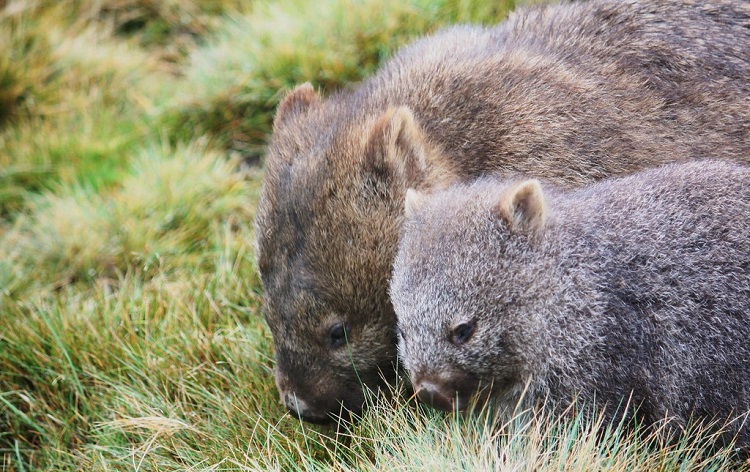
Wombats can be solitary animals, meaning they live alone, but you may also find them living in burrows with other wombats. It is believed that they are semi-social animals and actually visit each other in their burrows, a bit like when you pop into a friend’s house for coffee.
Baby wombats will not leave their mother until they are around 15 months old. Until this time, they will continue to return to their mother’s body to feed. They reach sexual maturity at two years of age when they will begin their own reproductive lifecycle.
Cubic Poop
Yes, wombat poop is cube-shaped, but why do they do it, and more to the point, how do they do it?
Patricia Yang is the author of a study into exactly why wombats’ poo is cube-shaped, and she has discovered something fascinating. It turns out that the cube shape is actually formed in the wombat intestine and not by the anus, which is circular.
The intestines of the wombat contract at different speeds, and this is what creates the corners of their cube-shaped poop. Wombats have been known to stack their poop up, and as they can create 100 cubes a day, that is one big stack of poop!
Reproduction and Lifecycle
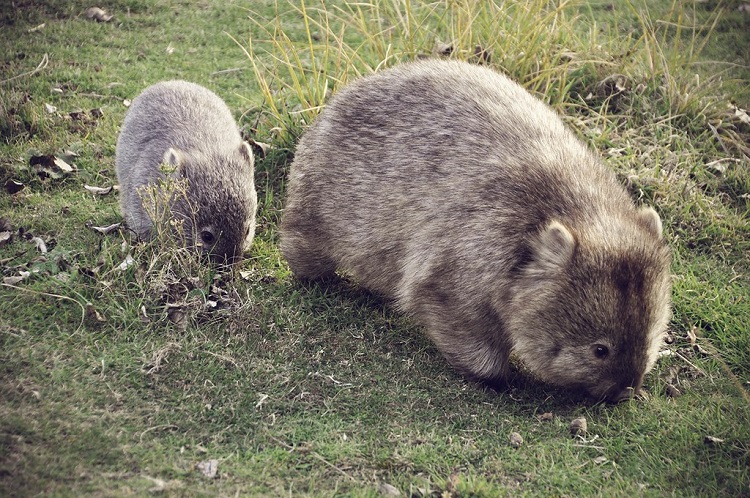
Wombats have a rather cute and unusual mating ritual, where female wombats bite the male on the butt and then run away, usually with him in hot pursuit. Even though this ritual sounds cute, it can get quite aggressive.
A wombat’s gestation period is only around 30 days, and then the mother gives birth to a single young around the size of a tiny jelly bean. The jelly bean then crawls into its mother’s pouch, where it latches onto a nipple and continues to develop for the next six months.
Now you may be wondering how they protect their precious cargo from infection. Well, their pouch not only helps the baby wombat to continue developing, but it also stops the infection by producing a substance that contains an antimicrobial compound – amazing, right?
You might think that once a baby wombat is fully developed, it leaves its mother’s pouch for good, but you would be wrong. The baby will often crawl back in to feed and even to escape danger until they are around seven months old, by which time they can take care of themselves.
Capybara vs. Wombat

People often believe that the capybara and wombat are actually related, but that could not be further from the truth. And there are a few key differences between them to prove it.
- Let’s start with their size. Capybaras are much bigger than a wombat weighing in at a whopping 60- 150 pounds compared to just 40-80 pounds for a wombat.
- The most noticeable difference between these two is probably in the way they look. The Capybara has a stocky appearance, a short muzzle, and its eyes and ears are on top of its head, while the wombat has stocky legs, small eyes, a round body, and an almost bearlike appearance.
- They live in very different parts of the world, as the Capybara is found in South America, while the wombat lives in Australia and Tasmania.
- Regarding the social side of life, Capybaras are definitely the winners! They are really social animals and live in herds. They don’t sleep very much and are really good swimmers.
The Wombat is a somewhat shy and nocturnal creature that avoids interactions with anyone or anything. They are also not the best swimmers and do a kind of doggy paddle, or I guess you could even call it a wombat paddle. - Their diets are quite similar yet different, with the Capybara enjoying bark, aquatic plants, and grass, and the wombat enjoying munching grass, shrubs, and roots.
Can a Wombat Be a Pet?
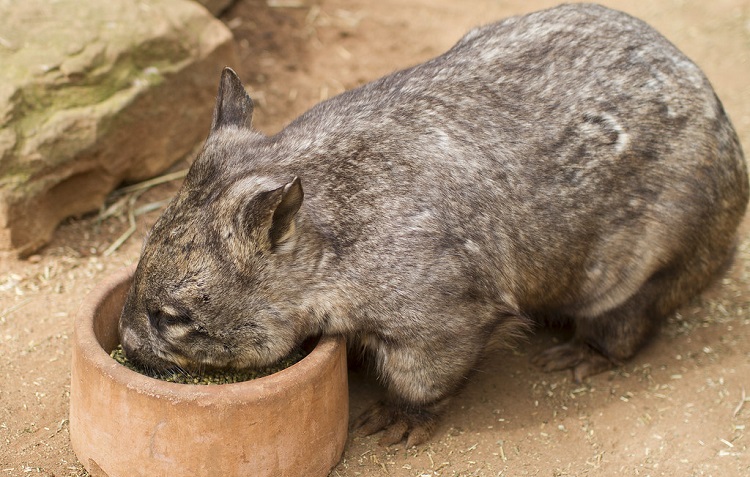
They may be cuteness-overloaded, but wombats will not make great pets. To start with, Australian law protects all wombat species and makes it illegal to keep them as a pet.
It will be difficult to create a natural habitat for them as they are diggers and will not be contained unless their enclosure has solid walls and floors. They also dig over large areas of land, so providing them with the space they need would be extremely hard.
Wombat’s claws can easily puncture human skin, and although they may not mean to cause injury, they can. They will also bite; a cornered wombat can easily knock over an unsuspecting human.
Are Wombats Dangerous?
As we have said, humans can receive bites and scrams from a wombat and be knocked over by a charging one. But for the most part, they do avoid any contact with humans.
Unfortunately, their burrowing nature does mean that they are often guilty of destroying crops which can cause huge problems for farmers and ranchers. However, this is mainly caused by humans encroaching on the wombat’s natural habitat.
Human Relations
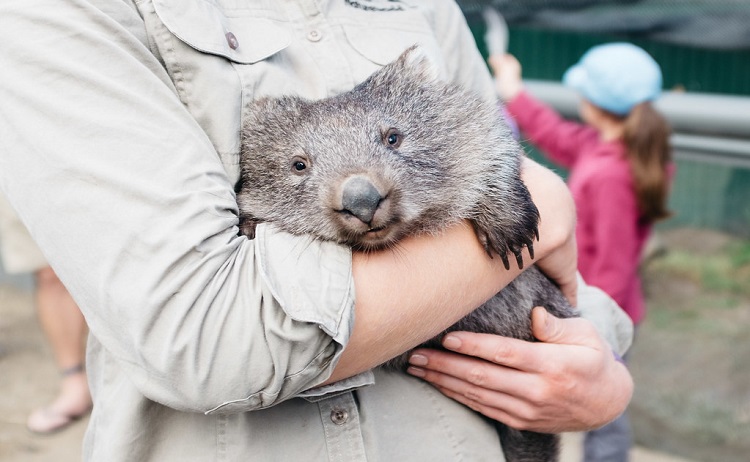
History
A wombat is not the first animal that comes to mind when you are thinking about rock art, and, to be honest, they are extremely rare, but there is an example in Wollemi National Park that is estimated to be around 4,000 years old.
They were depicted in aboriginal Dreamtime as an insignificant animal. There are many stories of where wombats come from, but they all seem to have the same ending: the wombat is banished to its underground burrowing habitat as punishment.
Attacks on Humans/Wombats Conflict With Humans
Attacks on humans are rare, but wombats can bite and puncture the skin with their sharp claws and teeth. Naturalist Harry Frauca received a bite that was 2cm deep, and this had gone through his thick woolen socks, rubber boots, and trousers – that shows just how sharp their teeth are.
The wombat’s conflict with humans mainly comes from their need for vast areas of land for burrowing and foraging for food and our need to change their natural habitats to roads, housing, and overgrazing of land.
This is leading to food shortages impacting the wombat population as they compete with grazing cattle and sheep.
Cultural Significance
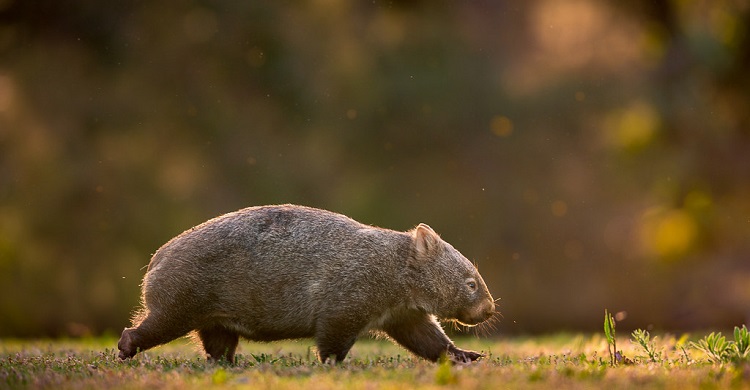
Common wombats are very much considered pests and are hunted by farmers due to their burrowing. However, one wombat was crowned the unofficial mascot of the 2000 Sydney Olympics – ‘Fatso the Fat-Arsed Wombat.’ And since 2005, October 22 has been an unofficial holiday called wombat day.
The use of wombat meat has been a source of aboriginal cuisine for many years. However, now due to the protection of the species, it is no longer used as part of mainstream cuisine, but wombat stew was once a truly Australian dish.
Wombats have also been featured on stamps and coins in Australia and on television. But the biggest wombat star to date has to be George, the wombat who was rescued from his dead mother’s body at four months old and now resides at the Australian Reptile Park, where he won the prestigious award of ‘Australia’s Most Adorable Animals.’
Conservation Status
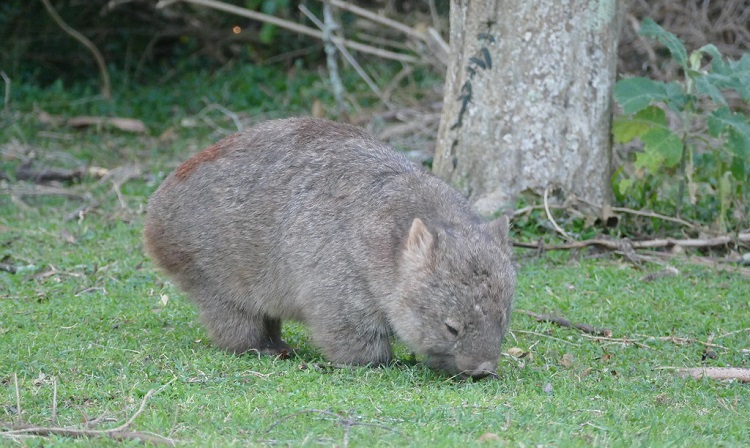
In 1906 life for the wombat changed when the Australian government declared them vermin and pests and encouraged people to kill them. Between 1925 and 1965, over 63,000 wombat skins were traded in for cash, and fortunately, this barbaric practice no longer goes on.
Today, the common wombat and Southern Hairy-nosed wombat have stable populations, unlike the Northern Hairy-nosed wombat. However, all three species face an uncertain future due to habitat competition with cattle, bait set out to control the population of rabbits, predation, drought, and disease.
Northern Hairy-nosed wombats have been given critical status, with only just over 100 of them still surviving. All of these are found living in the Epping forest national park. But grazing sheep and cattle are reducing the grasslands these wombats need to survive.
Dingoes also contributed to their falling numbers when they killed a large number of Northern Hairy-nosed wombats in 2000. In 2002, a fence was erected around the Park to help protect the wombat species from its natural predators.
Threats to Survival
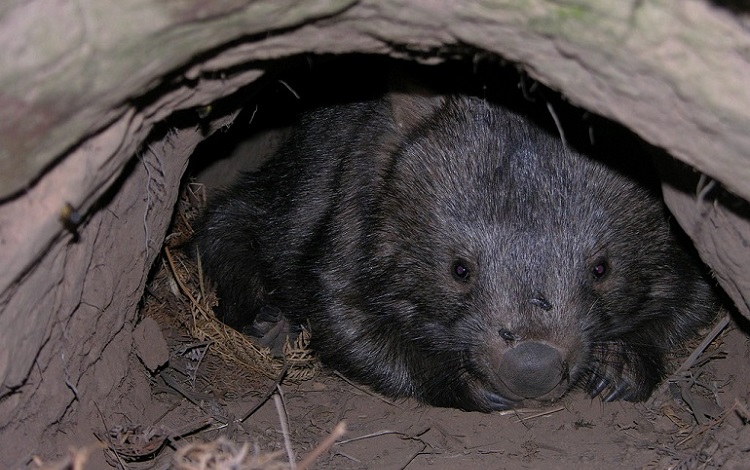
The biggest threats to these adorable animals are, in fact, humans. Land clearing for farming, roads, and housing, alongside competition for food from animals such as sheep, rabbits, and cattle, have devastated wombat populations.
As roads are built, we have divided the food source for wombats meaning that many are killed while trying to get to a new food source on the other side of a busy road.
Dingoes, foxes, wild dogs, and even eagles have prayed on wombats, which has also decreased their population, and even though these tough little creatures have some unique defense mechanisms, they are not always successful.
How Can We Help Them?
The Wombat Foundation has been set up to inspire people to help save these hairy-nosed little creatures. You can help by donating to their amazing cause and joining them in their fight to save these animals.
Even volunteering at one of their hairy nose day events will help raise awareness of the fight the common wombat is facing.
What is a Group of Wombats Called?
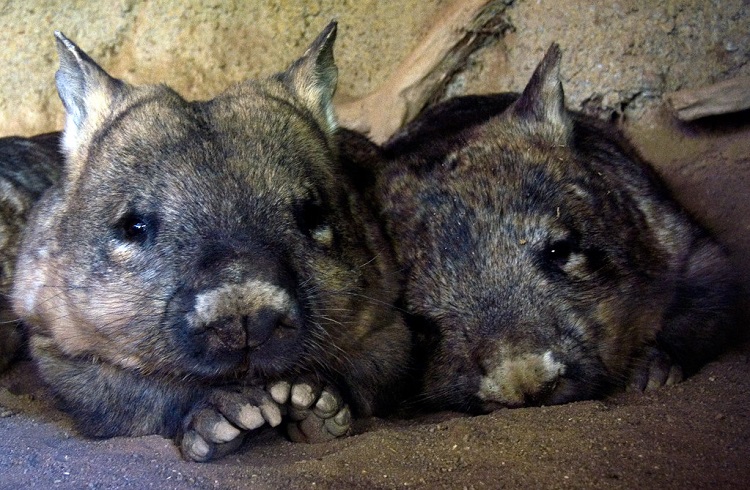
A group of wombats is called a ‘wisdom of wombats,’ a colony of wombats, or a ‘mob of wombats.’
Wombat Weakness
The wombat’s greatest weakness is its eyesight, but it more than makes up for this with its excellent sense of smell and hearing.
Fun Facts About Wombats
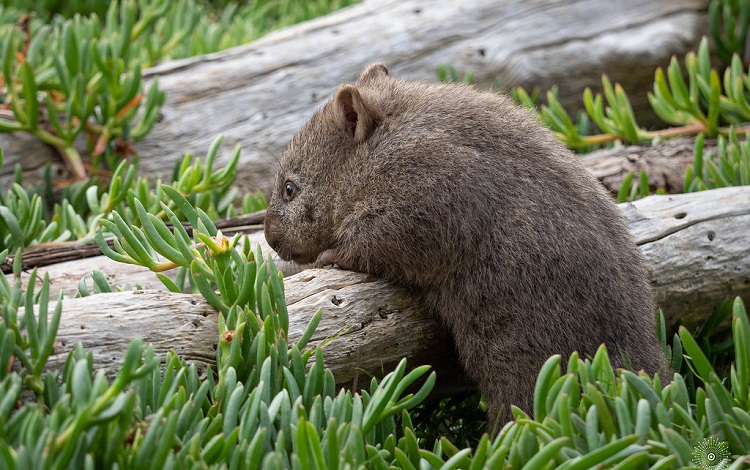
- There are three wombat species: Bare-nosed wombats, Southern Hairy-nosed wombats, and Northern Hairy-nosed wombats. All of them live in Australia.
- Wombats are usually nocturnal, which means there are very few sightings of them. These little critters spend their nights foraging for food or digging new tunnels, and their days are spent snoozing in their burrows.
Although they have been known to occasionally venture out during the day to soak up a little sun. - Wombats are fast, so don’t let that stocky frame deceive you. These amazing animals can hit speeds of around 24mph and sustain them for around 90 seconds. So good luck stopping a rampaging wombat! There are instances of humans actually being knocked over by a charging wombat.
- Now, this is a bizarre fact but yet still true. Wombat’s poo is cube-shaped – yes, really, I said cube-shaped! Scientists believe that it is this shape to stop it from rolling away as wombats mark their territory using their poop.
- Wombats burrows can stretch for over 250 feet, and these don’t just serve as homes for these comical creatures. During bushfires, they also offer a safe place for other small animals to escape the heat and flames.
- During prehistoric times it is believed that there were giant wombats roaming around Australia. They made up a group of animals called Diprotodon and lived in Australia during the ice age. Now, this giant wombat would have been around the size of a rhinoceros – yes, a Rhinoceros!
- Their pouches face backward to prevent the wombat joey from getting covered in dirt while their mom is busy digging burrows.
- The Northern Hairy-nosed wombat is the only species of a wombat that is critically endangered. There are roughly 115 of these amazing creatures left on earth, mainly due to food shortages and droughts. They are now only found in two really small areas of Queensland.
FAQ’s
Are Wombats Marsupials?
They most definitely are marsupials which means that they rear their young in a pouch in the same way as kangaroos and koalas do.
Is a Wombat Rodent?
While the wombat has similar characteristics to a rodent in that its incisors continue to grow and need to be kept in check by gnawing on tough vegetation, they are not part of the rodent family. But the Capybara is a part of the rodent family, and wombats are often mistaken for them.
How Do Wombats Defend Themselves?
Wombats defend themselves by running to the nearest burrow, where they can fight off predators by crushing their heads with their butts against the wall or roof of the burrow. Even in the open, a wombat could fight off an attack from a single dog.
Is a Wombat an Omnivore?
Wombats are 100% herbivores, meaning they do not eat meat. They only eat grasses, plants, bark, etc.
Conclusion
These hairy marsupials can certainly steal our hearts with their cuteness, but not everyone sees them in this light, leading to their population decrease.
They were declared pests, and money was offered for their skin. Fortunately, this is no longer the case, and they are widely protected by Australian Law and then to being the unofficial mascot of the 2000 Sydney Olympics.
These comical bear-like creatures have come a long way and survived millions of years, yet their biggest threat is us and how we are taking over their natural habitat, causing them difficulty finding food and being killed on our roads.
We hope the wombat has stolen a place in your heart, and you will help us fight for their survival!


